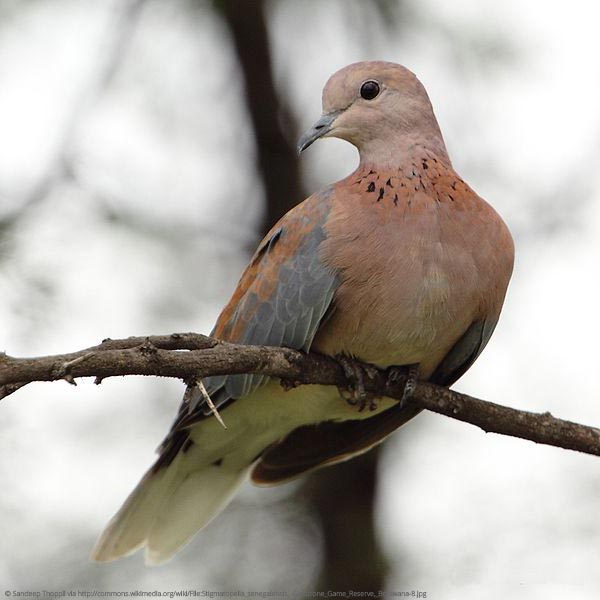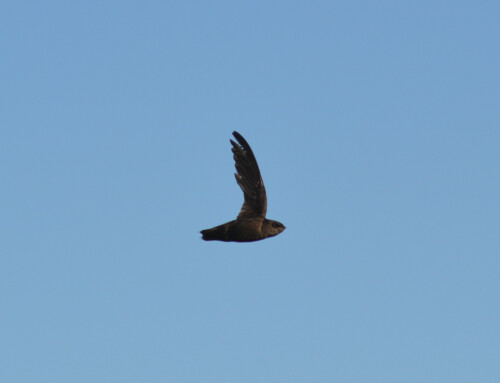Are native bird species responsible for dispersing non-native plant seeds?
LINKED PAPER
The potential for birds to disperse the seeds of Acacia cyclops, an invasive non-native plant in South Africa. Thabiso M. Mokotjomela, John H. Hoffmann & Colleen T. Downs. 2015.
IBIS. DOI: 10.1111/ibi.12260.
For the first time, seed-eating doves are proven to be implicated in dispersal of invasive non-native plants in South Africa.
Our recent study published in IBIS demonstrated with field exclosure experiments set up on selected branches in the tree canopy, and with feeding trials using caged birds that a limited number of the remaining seeds of A. cyclops are removed and dispersed by birds.
The expansive spatial extent (i.e. ~ 643 000 ha) of invasions by Australian acacias including Acacia cyclops in South Africa is a reliable pointer to the availability of effective seed dispersal services. Long distance seed dispersal by birds is often implicated in range expansions of invasive non-native plants yet little is known about bird-mediated seed dispersal. Among other methods for managing invasive plants in South Africa (A), biological control agents (i.e. introduced natural enemies) are used. Two biological control agents, a Seed Weevil Melanterius servulus and a Flower-galling Midge Dasineura dielsi (B), were released on A. cyclops in 1991 and 2002, respectively. The biological control agents have substantially suppressed seed production in A. cyclops, i.e. turning seed pods into galls (C), with possible consequences for levels of seed dispersal by birds.
The amount of A. cyclops seeds taken by birds was measured by comparing branches covered in bird netting and branches available to birds. Mature seeds were harvested (D & E), and fed to caged birds. Only two frugivorous species (Knysna Turaco Turaco corythaix and Red-winged Starling Onychognathus morio,) and two granivorous species (Red-eyed Dove Streptopelia semitorquata and Laughing Dove Streptopelia senegalensis) ate the seeds in the feeding trials (F, G, H & I). The germination rate of the seeds ingested by the birds was measured.
Seeds ingested by the granivorous Red-eyed Dove had highest germination rates thereby demystifying a long-standing misconception that the ubiquitous dove species cannot effectively disperse seeds. Two frugivore bird species: the Knysna Turaco and the Red-winged Starling also improved germination rates of ingested seeds but the granivorous Laughing Dove did not.
No clear relationship was established between birds’ body size and length of time for which seeds are retained in the gut, probably because of the laxative compounds present in many non-native fruits/seeds. This finding confounded the models for estimating seed dispersal distances using a vector’s body size as a predictor for length of seed retention time in the gut and thus the distance seeds might be dispersed.
I am now working on the use of miniaturised GPS – cellular transmitters to monitor movement patterns of the foraging birds to fill the gap of unknown spatial distributions of dispersed A. cyclops seeds. This knowledge will provide an important guide for designing spatially-explicit management strategies for many invasive plant species with seeds dispersed by birds.
Further reading
Dennis, A.J. & Westcott, D.A. (2006) Reducing complexity when studying seed dispersal at community scales: a functional classification of vertebrate seed dispersers in tropical forests. Oecologia, 149, 620–634.
Mokotjomela, T., Musil, C. & Esler, K. (2013) Potential seed dispersal distances of native and non-native fleshy fruiting shrubs in the South African Mediterranean climate region. Plant Ecol. 214: 1127–1137.
Schurr, F.M., Spiegel, O., Steinitz, O., Trakhtenbrot, A., Tsoar, A. & Nathan, N. (2009) Long-distance seed dispersal. Ann. Plant Rev., 38: 204–237.
Image credit
Laughing Dove © Sandeep Thoppil
If you want to write about your research in #theBOUblog, then please see here.








